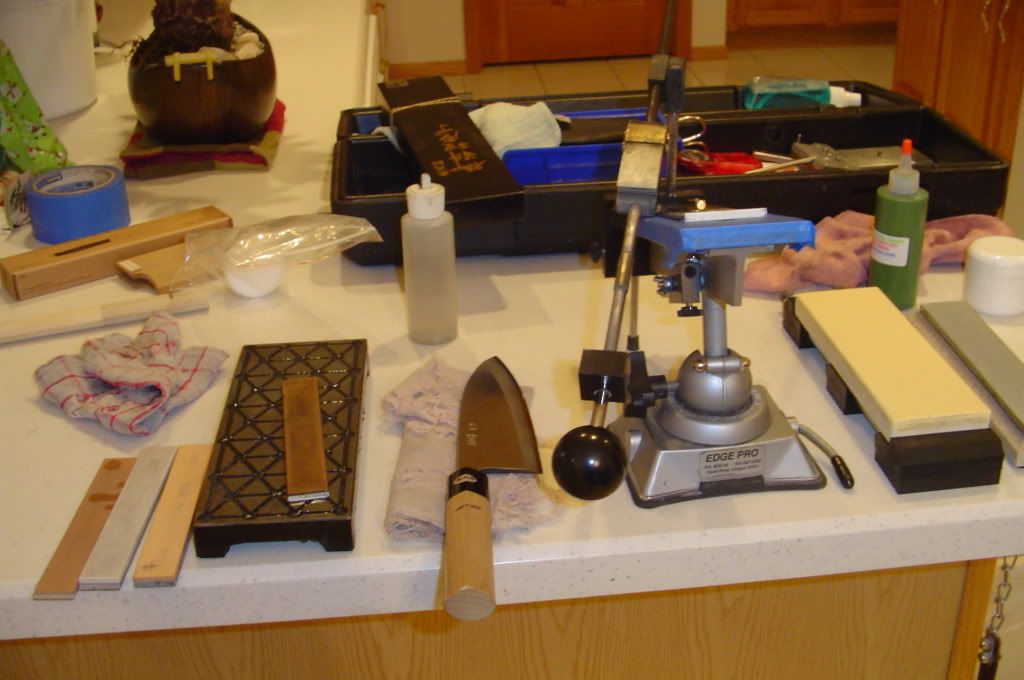The Tourist
Moderator
During a debate about a week ago, we discussed the construction of knives, both serrated and plain edge.
I believe there is no practical use for serrations.
To demonstrate that, I called my supplier and secured a white steel, chisel grind Japanese deba kitchen knife, and a V-grind stainless laminate gyuto (chefs' knife) for testing.
Using waterstones in a modern rendition of 13th century practices, I'm going to polish the edges. I have chosen knives of that alloy and edge profile to show possible designs throughout history.
I intend to use parts of the Edge Pro system, freehand stones, pastes (chromium oxide in paste and liquid), polishing papers, and leather.
All of these items can be purchased by TFL members quite easily. No ringers.
Once the edges have been sharpened, they will be set up for display at my sharpening area for view by local members.
Any member can cut whatever they wish with the edges, and bring a serrated knife with them for any comparison. I'll even sharpen the serrated knife to level the playing field.
What do you guys want to see?
I believe there is no practical use for serrations.
To demonstrate that, I called my supplier and secured a white steel, chisel grind Japanese deba kitchen knife, and a V-grind stainless laminate gyuto (chefs' knife) for testing.
Using waterstones in a modern rendition of 13th century practices, I'm going to polish the edges. I have chosen knives of that alloy and edge profile to show possible designs throughout history.
I intend to use parts of the Edge Pro system, freehand stones, pastes (chromium oxide in paste and liquid), polishing papers, and leather.
All of these items can be purchased by TFL members quite easily. No ringers.
Once the edges have been sharpened, they will be set up for display at my sharpening area for view by local members.
Any member can cut whatever they wish with the edges, and bring a serrated knife with them for any comparison. I'll even sharpen the serrated knife to level the playing field.
What do you guys want to see?



